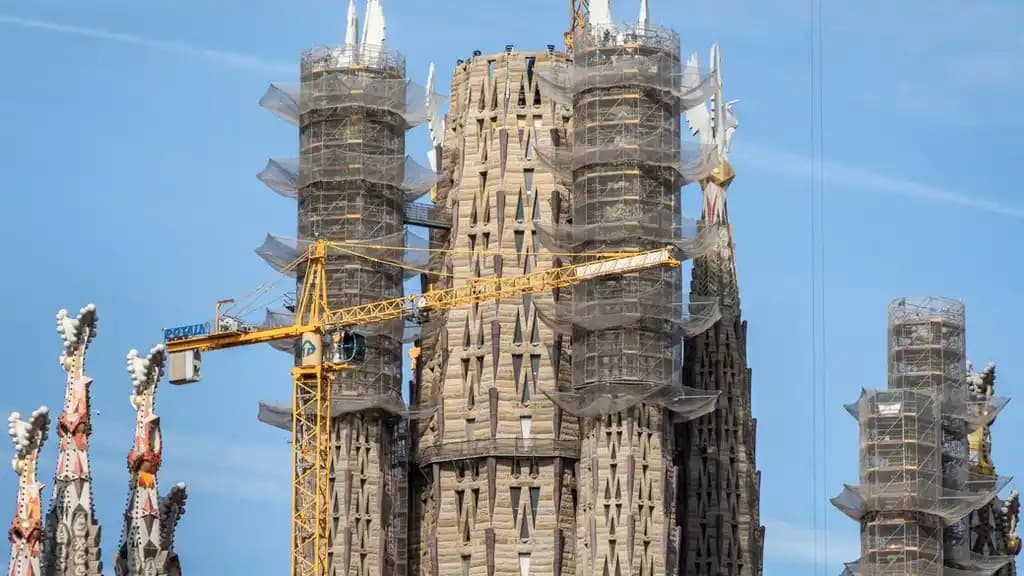We're loading the full news article for you. This includes the article content, images, author information, and related articles.
Antoni Gaudí's Barcelona masterpiece surpasses Germany's Ulm Minster after 143 years of construction, a global architectural milestone with indirect relevance to Kenya's growing urban design and tourism sectors.

Barcelona’s Sagrada Familia basilica officially became the world’s tallest church on Thursday, 30 October 2025, after a crucial section of its central Tower of Jesus Christ was installed, elevating its height to 162.91 metres (534 feet, 8 inches). The milestone, confirmed in a statement by the church's construction board, means the iconic structure has surpassed the previous record-holder, Ulm Minster in Germany, which stands at 161.53 metres (530 feet). The event marks a significant moment in a construction saga that began 143 years ago.
The final piece hoisted into place on Thursday morning, East Africa Time, is part of the tower's crowning cross. When fully assembled in the coming months, the Tower of Jesus Christ will reach a final height of 172 metres (564 feet), cementing its record. This achievement brings the basilica, a UNESCO World Heritage site, closer to its projected structural completion in 2026, a date set to coincide with the centenary of its visionary architect Antoni Gaudí's death.
The first stone of the Sagrada Familia was laid in 1882, and Gaudí took over the project in 1883, transforming it with his unique blend of Gothic and Art Nouveau styles that draw heavily on natural forms. Gaudí, who is buried in the church's crypt, famously remarked, "My client is not in a hurry," aware that the colossal project would not be finished in his lifetime. At the time of his death in 1926, only one of the planned 18 towers was complete.
For decades, construction progressed slowly, hampered by the Spanish Civil War—during which many of Gaudí's original plans and models were destroyed—and a reliance on private donations. However, in recent years, the pace has accelerated dramatically, funded entirely by the millions of tourists who visit annually. In 2023, the basilica received 4.7 million visitors, with ticket sales generating the revenue needed for the final construction phases. Officials have indicated that while the main structure will be finished by 2026, decorative work and a controversial grand staircase may continue until 2034.
While the completion of the Sagrada Familia has no direct diplomatic or cultural ties to Kenya, its journey offers a powerful global case study in architectural ambition, long-term project management, and the economic power of cultural tourism. For Kenya and the wider East Africa region, where iconic structures like Nairobi's Britam and GTC Towers are reshaping city skylines, Gaudí's project underscores the potential for architecture to define a city's international identity.
The funding model of the Sagrada Familia, reliant on tourism revenue, is particularly relevant. Kenya's own landmarks, from the KICC to emerging contemporary buildings, are central to its tourism and business appeal. The global fascination with the Spanish basilica, which drew nearly 5 million visitors last year, highlights how architectural heritage can become a sustainable economic engine. As Kenya continues to develop its infrastructure and urban centres, the Sagrada Familia serves as a global benchmark for how visionary design can create lasting cultural and economic value.
Kenya and Spain maintain steady diplomatic relations, focused on trade, education, and investment, with Spain viewing Kenya as a strategic partner in Africa. While this architectural achievement in Barcelona falls outside the scope of current bilateral agreements, it stands as a testament to the universal appeal of groundbreaking design and perseverance—principles that resonate with Kenya's own development aspirations.
Keep the conversation in one place—threads here stay linked to the story and in the forums.
Other hot threads
E-sports and Gaming Community in Kenya
Active 7 months ago
Popular Recreational Activities Across Counties
Active 7 months ago
The Role of Technology in Modern Agriculture (AgriTech)
Active 7 months ago
Investing in Youth Sports Development Programs
Active 7 months ago